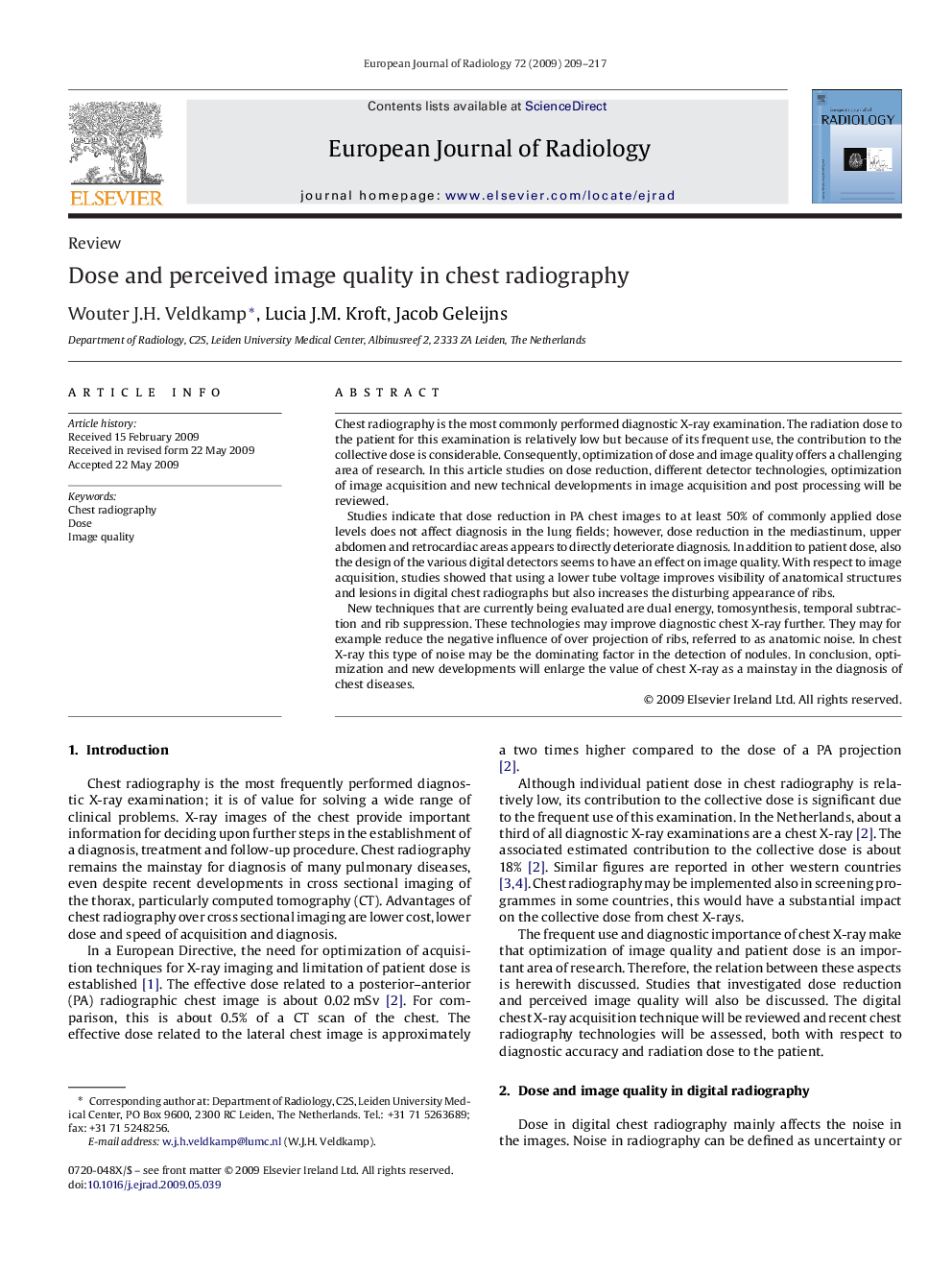| Article ID | Journal | Published Year | Pages | File Type |
|---|---|---|---|---|
| 4227257 | European Journal of Radiology | 2009 | 9 Pages |
Chest radiography is the most commonly performed diagnostic X-ray examination. The radiation dose to the patient for this examination is relatively low but because of its frequent use, the contribution to the collective dose is considerable. Consequently, optimization of dose and image quality offers a challenging area of research. In this article studies on dose reduction, different detector technologies, optimization of image acquisition and new technical developments in image acquisition and post processing will be reviewed.Studies indicate that dose reduction in PA chest images to at least 50% of commonly applied dose levels does not affect diagnosis in the lung fields; however, dose reduction in the mediastinum, upper abdomen and retrocardiac areas appears to directly deteriorate diagnosis. In addition to patient dose, also the design of the various digital detectors seems to have an effect on image quality. With respect to image acquisition, studies showed that using a lower tube voltage improves visibility of anatomical structures and lesions in digital chest radiographs but also increases the disturbing appearance of ribs.New techniques that are currently being evaluated are dual energy, tomosynthesis, temporal subtraction and rib suppression. These technologies may improve diagnostic chest X-ray further. They may for example reduce the negative influence of over projection of ribs, referred to as anatomic noise. In chest X-ray this type of noise may be the dominating factor in the detection of nodules. In conclusion, optimization and new developments will enlarge the value of chest X-ray as a mainstay in the diagnosis of chest diseases.
